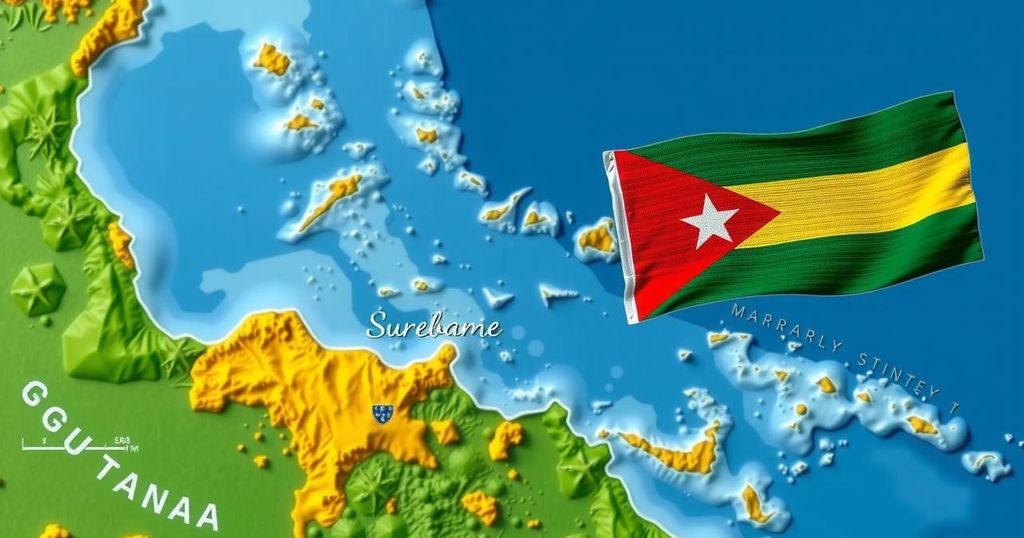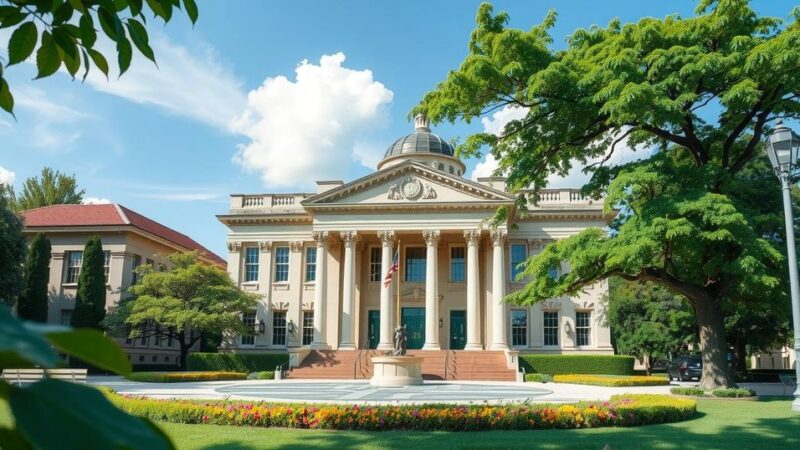Suriname’s Foreign Minister Albert Ramdin submitted a protest note to Guyana in response to President Irfaan Ali’s plans to enhance the Camp Jaguar airstrip within the disputed Tigri area. The protest highlights concerns about unapproved actions taken on Surinamese territory and potential disruptions to friendly cooperation between the neighboring countries.
On Friday, Albert Ramdin, the Minister of Foreign Affairs, International Business, and International Cooperation of Suriname, lodged a formal protest with the government of Guyana following reports of planned developments in the disputed Tigri area. The President of Guyana, Irfaan Ali, intends to enhance the airstrip at Camp Jaguar, a military facility situated within this contested region. During a meeting with the Guyanese ambassador, Ramdin expressed concerns about these actions being undertaken without Surinamese permission and emphasized that such developments could jeopardize the amicable relations between the two nations.
The discussions also included Guyana’s previous intentions to construct a new school on Kasjoe Island, another area within the disputed Upper Corantijn River region. Ramdin reiterated that the presence of Guyanese officials in the Tigri area contravenes agreements established in 1970 between the two countries. He voiced concerns that these public declarations by the Guyanese government may threaten the constructive cooperation fostered between Suriname and Guyana, potentially introducing unnecessary tensions in their bilateral relations.
Historically, the Tigri area—which Guyana refers to as the New River Triangle—has been a source of contention since 1969 when the Guyana Defence Force took control amid escalating tensions. Since then, both nations have made efforts to mediate their differences, with international mediation offered in 1970. Nonetheless, Guyana’s continued presence in the disputed territory raises questions regarding adherence to the agreements made and highlights the ongoing complexities of the border dispute between these two countries.
The border dispute between Suriname and Guyana centers on the Tigri area, a region which has been a point of contention since Guyana’s military seized control in 1969. Despite various attempts at resolution, including international mediation, the territorial claim remains heated. Suriname asserts its territorial claims over the region, while Guyana has continued to establish a presence therein. Diplomatic relations between the two countries have been influenced by these ongoing disputes, as evidenced by recent tensions arising from Guyana’s development plans in the area.
In conclusion, the recent protests by Suriname against Guyana’s development plans in the disputed Tigri area underscore the ongoing territorial disputes between the two nations. Albert Ramdin’s diplomatic actions and concerns regarding the impact of these developments on bilateral relations reflect the sensitive nature of the historical claims. The interplay of sovereignty, international agreements, and diplomatic relations remains crucial as both nations navigate their complex relationship amidst territorial challenges.
Original Source: www.guardian.co.tt






